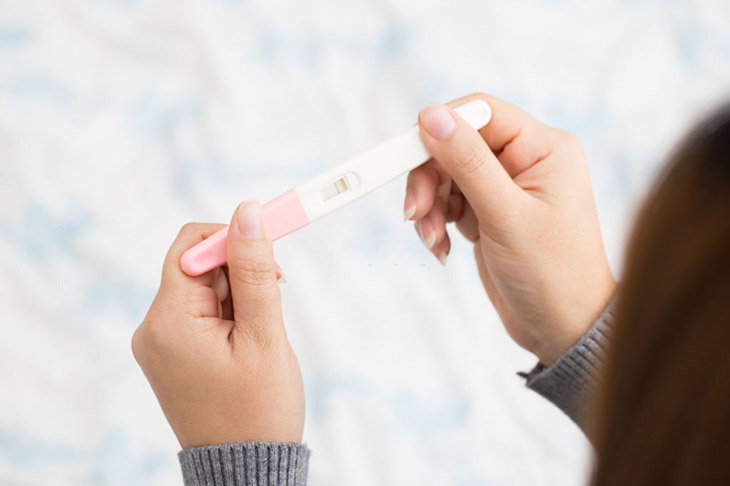Hoping for a positive FET line progression is what all women, who struggle with infertility, often do.
After taking the last step of the IVF cycle, the frozen embryo transfer, they usually can’t wait to see the result.
However, is line progression accurate, and how to understand the readings in the early stages?
Our article will provide the necessary information on the topic and some tips for taking the tests. Let’s dig in!
What Is FET?

FET, or frozen embryo transfer, is for those who have been through unsuccessful IVF(s) and have frozen embryos left over.
The process is usually possible, less stressful, and intense compared to the initial IVF attempts. Some studies even show that frozen embryos are as good as fresh ones.
The procedure is simple and often does not need pain relief.
On the day of transfer, the embryos will be thawed, and the doctor will use a catheter to place them in the woman’s uterus.
The ultrasound is involved in the process, bringing patients comfort and guiding doctors to make a perfect placement without touching the cervix.
Even if it happens, you may feel mild cramping only.
What Is FET Line Progression? Is It Reliable?

FET line progression refers to the changes of the test lines on the pregnancy tests that a woman takes over time after the FET process.
It’s often reliable, though the IVF pregnancy test line progression can’t be shown clearly for some women whose hCG level is naturally low.
How Does It Work?
After making the transfer, most people can’t wait to see the IVF pregnancy test progression.
You just need to take a home pregnancy test detecting the pregnancy hormone (hCG) in your urine.
A type of technology called lateral flow device (LFD) is used to identify the pregnancy status of a female.
The lateral flow device (LFD) consists of layers of various paper types made with small holes of different sizes.
Since it obtains the papers’ porous structure and chemical attributes, chemicals, proteins, and cells are filtered from the liquid.
In this case, it’s used to detect the level of hCG in your urine to conclude your pregnancy status.
It will show a positive result, indicated by two lines, if it can detect the hormone and vice versa, one line for negative one.
Depending on how far along you are after FET, the result may appear clearly or not.
To obtain a progression, you should take several tests with a gap of time to compare and come to a conclusion.
Is The Line Progression Reliable?
Though there are many types of pregnancy tests, most of them are 99% accurate if used properly. Thanks to the development of technology, its accuracy has improved a lot.
In 1982, the false rate was quite high, at 25%. However, in the early 1990s, the reliability of these tests increased to 99%.
So, the result you see after testing likely determines whether you’re pregnant after FET or not.
Nevertheless, if you take the tests too early after the transfer process, they may not display clearly. So, you’d better check it again after a couple of days.
Another case is that your urine contains a naturally low level of pregnancy hormone (hCG), so the tests can’t detect and give you a clear result.
How Dark Should It Be?
Generally, if you’re pregnant, you’ll get a dark line on your test result. If not, you’ll not see that line.
When the line is faint, be patient and test again after a few days to clarify your situation.
Remember that though high concentrations of hCG make the line darker, the amount of hCG in the urine varies during the day.
For example, if you drink more water, hCG will become more diluted, thus, leading to incorrect results.
Therefore, the question of how the pregnancy line progresses after FET can’t have an exact answer.
In addition, how soon after FET you get a positive depends on what test and how soon you take the tests; the result can sometimes show up correctly, sometimes doesn’t.
Not all tests can detect and show a faint line less than one week after transferring.
People tend to take a pregnancy test 7 days after frozen embryo transfer to hope for a positive dark line.
If you have a negative pregnancy test 7, 8 days after embryo transfer, don’t worry; wait to test again later.
It’s still possible for you to have a faint positive 14 days after embryo transfer.
What Are Tips To Take The Test?
- Testing in the morning when you have the most concentrated urine is highly recommended to produce an accurate result.
- Ensure you avoid flooded pregnancy tests by properly dipping the test in a cup of urine (below the arrow).
- Write down the date and time to compare the progress.
- Remember, some medications can affect the result and give a false one. If you’re unsure, ask your doctor.
- If you have a positive result and then a negative one, be mindful of the risk of early miscarriage.
Although it can be a mistake, you still should go to your local healthcare center to clarify.
FAQs
Urine Tests vs. Blood Tests. Which One Should You Take?
The composition of blood is quite stable all the time, making it a more reliable test to monitor the hCG level than the urine one.
Plus, blood tests allow you to know whether you’re pregnant after nine to ten days of ovulation.
However, doctors only suggest blood tests in case of a medical need; for example, hCG levels dropped then went back up.
If you are worried about miscarriage or have a history of pregnancy complications, consult your doctor for advice.
Does Hcg Line Progression Matter?
No, it does not matter as most people think. The main thing is that you have a positive pregnancy test result.
What Happens After FET?
After having FET, you will have about one hour to lie down to take rest, and the doctor will give you instructions and confirm the next appointment.
Some patients may need 24-hour bed rest post-procedure, or you can take a light walk if you want. Ensure you don’t have any moderate or high levels of activity.
Two weeks after your IVF-FET is the time to take a blood pregnancy test. You shouldn’t take the tests earlier than recommended as it might bring faulty results.
What Are The Post Transfer Symptoms?
Some possible symptoms after FET include:
- Light spotting or bleeding
- Pelvic pain and cramping
- Fatigue feeling
- Nausea
- Tender, sore breasts
- Vaginal discharge changes
- More frequent urination
- Missed periods
- No symptoms
Conclusion
FET line progression can tell if your frozen embryo transfer process is successful and can bring new life to this world.
Like other pregnancy tests, the test is simple and based on the hCG level in your urine.
We understand many couples aspire to have a fully completed family with the birth of a cute little creature. Positive results clear all the worries and fears that you’ve been through.
However, don’t give up if you can’t see what you’ve expected. Remember, there’s always light at the end of every tunnel, and your baby is still waiting for you.
